Taiwanese Humpback Dolphin
Sousa chinensis taiwanensis
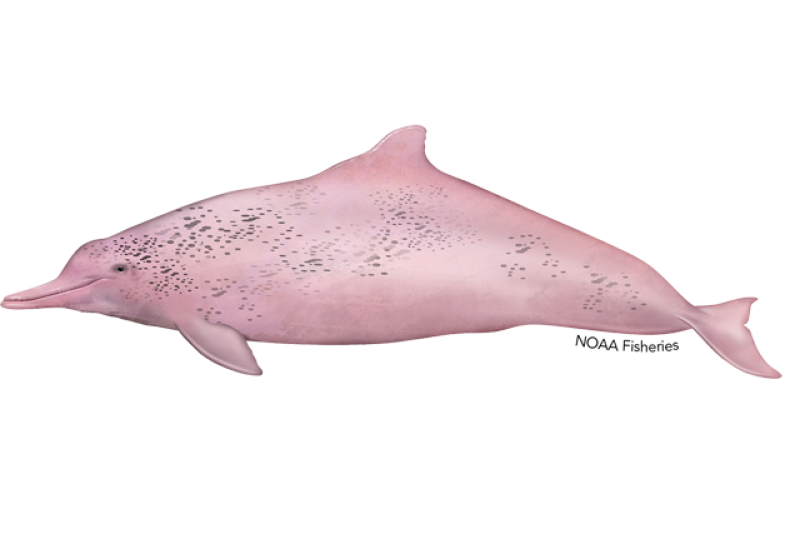
Protected Status
Quick Facts
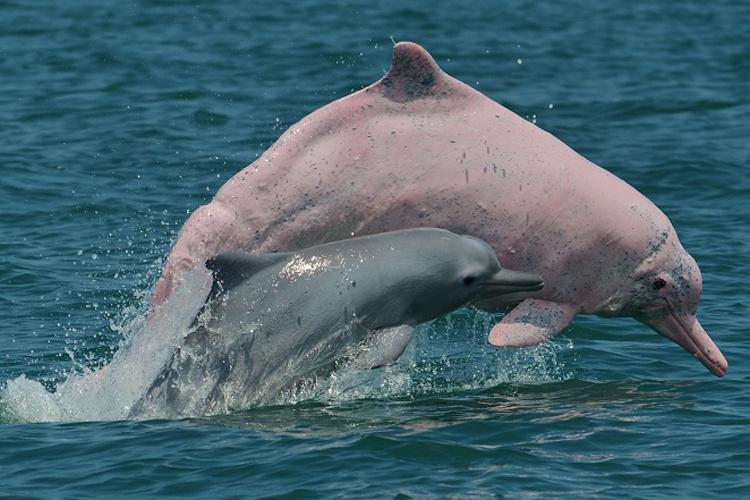 Taiwanese humpback dolphin and calf. Credit: Claryana Araújo-Wang/CetAsia Research Group
Taiwanese humpback dolphin and calf. Credit: Claryana Araújo-Wang/CetAsia Research Group
Taiwanese humpback dolphin and calf. Credit: Claryana Araújo-Wang/CetAsia Research Group
About the Species
 Taiwanese humpback dolphin and calf. Credit: Claryana Araújo-Wang/CetAsia Research Group
Taiwanese humpback dolphin and calf. Credit: Claryana Araújo-Wang/CetAsia Research Group
Taiwanese humpback dolphin and calf. Credit: Claryana Araújo-Wang/CetAsia Research Group
The Taiwanese humpback dolphin is a subspecies of the Indo-Pacific humpback dolphin that is only found in a small, narrow stretch of estuarine water off the western coast of Taiwan. This subspecies was first described in 2002 but did not receive formal recognition until 2016. The population is small with fewer than 100 individuals remaining. It also has late maturity, slow reproductive rate, long calving intervals, and long periods of female-calf association.
The main threats to the Taiwanese humpback dolphin include entanglement in fishing gear and habitat destruction, degradation, and modification due to coastal development. In 2018, NOAA Fisheries listed the Taiwanese humpback dolphin as endangered under the Endangered Species Act.
Appearance
In general, the Indo-Pacific humpback dolphin is easily distinguished from other dolphin species in its range. It has a robust body, a long distinct beak, a short dorsal fin situated on a wide dorsal hump, and round-tipped, broad flippers and tail.
The Taiwanese humpback dolphin subspecies has a unique appearance. Young dolphins appear dark grey with no or few light-colored spots. As adults, the Taiwanese humpback dolphin looks mostly white and appears pinkish with spots on the dorsal fin that remain throughout their lives.
Behavior and Diet
The Taiwanese humpback dolphin is considered a generalist and opportunistic feeder that primarily eats fish. Although information on the subspecies’ feeding behavior and diet is limited, their diet is likely predominantly estuarine fish and occasionally cephalopods and crustaceans.
Where They Live
The Taiwanese humpback dolphin has a very restricted range as it lives in a very narrow strip of shallow, estuarine water off the coast of central western Taiwan with no evidence of seasonal movements. The total distribution of the dolphin covers approximately 466 square miles, but its core distribution encompasses only approximately 318 square miles of coastal waters. The population is largely concentrated between the Tongxiao River estuary and Taixi, which encompasses the estuaries of the Dadu and Jhushuei rivers, the two largest river systems in western Taiwan. This subspecies prefers shallow water of less than 65 feet deep and has never been observed in waters deeper than 98 feet.
 World map providing approximate representation of the Taiwanese humpback dolphin’s range.
World map providing approximate representation of the Taiwanese humpback dolphin’s range.
Lifespan & Reproduction
Information on the Taiwanese humpback dolphin’s life history is limited. The dolphin likely lives to approximately 40 years of age based on studies of closely related populations. Age of sexual maturity is 11 to 12 years. Pregnancy lasts 10 to 12 months and weaning may take up to 2 years. Mean calving interval is 5 years. There are strong female-calf relationships that may last 3 to 4 years. Births occur throughout the year but decrease in late summer and through mid-winter with the majority of the estimated births occurring in spring and summer. Average calving intervals (the time between the estimated birth months of two successive calves) is approximately 3 years.
Threats
Entanglement
Entanglements due to interactions with fishing gear are likely the most serious and immediate threat to the dolphin, which cause serious injury and mortality.
Habitat Destruction, Degradation, and Modification
Ongoing coastal development in Taiwan, including land reclamation activities, freshwater diversion, and pollution are destroying and degrading the dolphin’s limited habitat. Development of wind energy can displace dolphins during construction, but is a more serious concern by displacing fishing activities into shallower dolphin habitat.
Scientific Classification
| Kingdom | Animalia | Phylum | Chordata | Class | Mammalia | Order | Cetacea | Family | Delphinidae | Genus | Sousa | Species | chinensis |
|---|
Last updated by NOAA Fisheries on 11/26/2024
Featured News
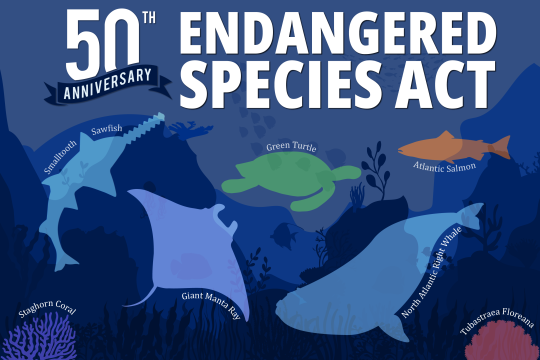
The Endangered Species Act: 50 Years of Conserving Species
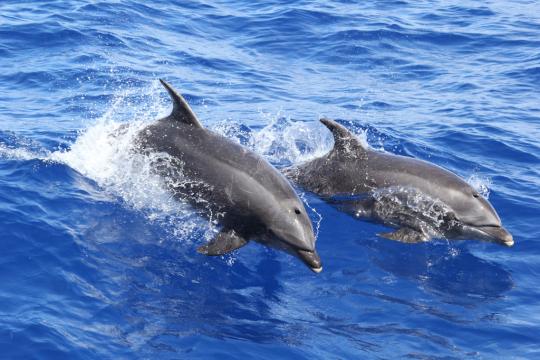 Pair of bottlenose dolphins. Credit: NOAA Pacific Islands Fisheries Science Center/Lisa Morse.
Pair of bottlenose dolphins. Credit: NOAA Pacific Islands Fisheries Science Center/Lisa Morse.
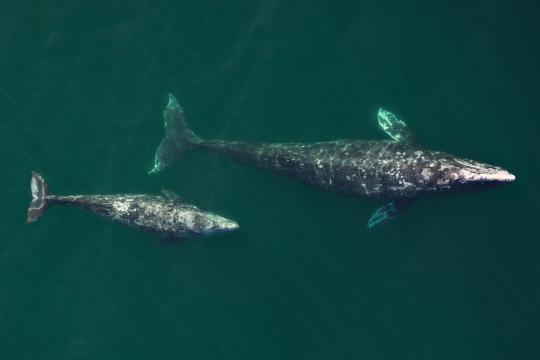 Gray whales were nearly hunted to extinction by commercial whaling. Protections under the MMPA, ESA, and the end of commercial whaling have allowed the species to recover. Credit: NOAA Fisheries (Permit #19091).
Gray whales were nearly hunted to extinction by commercial whaling. Protections under the MMPA, ESA, and the end of commercial whaling have allowed the species to recover. Credit: NOAA Fisheries (Permit #19091).
Celebrating 50 Years of the Marine Mammal Protection Act
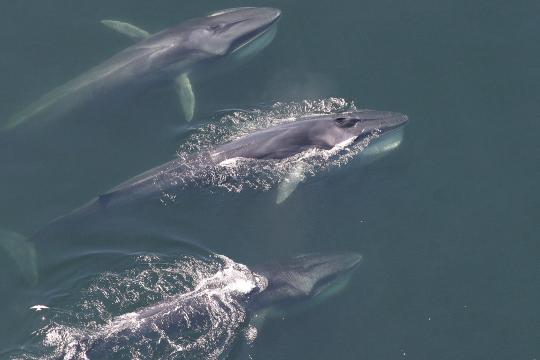 Finback whales. Credit: NOAA Fisheries
Finback whales. Credit: NOAA Fisheries
11 Cool Facts About Whales, Dolphins, and Porpoises
Management Overview
The Taiwanese humpback dolphin is listed as endangered under the Endangered Species Act.
The Taiwanese humpback dolphin is protected throughout its range under the Marine Mammal Protection Act.
Additionally, the Taiwanese humpback dolphin is listed under:
- Appendix I of the Convention on International Trade in Endangered Species of Wild Fauna and Flora (CITES)
Conservation Efforts
Dolphin-Safe/Tuna Tracking and Verification Program
Dolphins, like other marine mammals, may become bycatch in fisheries. Some species of tuna are known to aggregate beneath schools of certain dolphin stocks. In some parts of the world, this close association led to the fishing practice of encircling a dolphin school to capture the tuna concentrated below. The Dolphin Protection Consumer Information Act established a national tuna tracking program to ensure that tuna imported into the United States meets certain requirements to ensure the safety of dolphins during tuna fishing operations.
Learn more about the Dolphin-Safe/Tuna Tracking and Verification Program
Marine Mammal Unusual Mortality Events
Under the Marine Mammal Protection Act, an unusual mortality event (UME) is defined as "a stranding that is unexpected; involves a significant die-off of any marine mammal population; and demands immediate response." To understand the health of marine mammal populations, scientists study unusual mortality events.
Regulatory History
There are fewer than 100 Taiwanese humpback dolphin individuals remaining. In 2016, NOAA Fisheries received a petition to list the Taiwanese humpback dolphin as threatened or endangered under the Endangered Species Act. In our 90-day finding, we concluded that the petitioned action may be warranted. After completing a status review, we proposed to list the subspecies as endangered and requested comments from the public. In May 2018, NOAA Fisheries listed the Taiwanese humpback dolphin as endangered under the Endangered Species Act.
Key Actions and Documents
More Information
Last updated by NOAA Fisheries on 11/26/2024
Documents
Taiwanese Humpback Dolphin 5-Year Review
This document is the ESA 5-year review of the species based on the best available data.
Status Review Report of the Taiwanese Humpback Dolphin
The 2018 status review report conducted on a petition to list the Taiwanese humpback dolphin, a…
Last updated by NOAA Fisheries on 11/26/2024